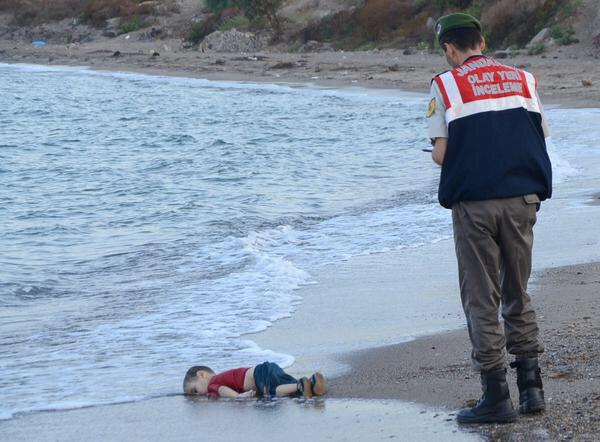A recent news photo showed a policeman approaching a drowned refugee toddler. An interview with the toddler’s father revealed that he had lost his wife and both of their children in a desperate attempt to cross the Mediterranean to a Greek island. The image and the story work powerfully to make us aware of the plight of the many refugees worldwide who are desperately trying to move to a better life.
About 55 million people die worldwide, each year. We cannot grieve for all in the same way. We know little or nothing of most of them; we seldom know that they have passed away. The image and story above demonstrate how just a bit of visibility can increase our compassion for thousands of people. Because it is a toddler who died, we know that he is innocent of any wrongdoing that could have contributed to his demise. When we hear of war deaths, we may feel compassion for all involved, but particularly for non-combatants impacted by the violence.
Mass shootings are disturbing, but mass shootings of school students are particularly upsetting. And the death of so many Sandy Hook elementary students was especially shocking. The younger the victim, the greater the gut impact.
When we learn of a tragic death, the impact is greatest when the victim is young and innocent. How then is it that we have hardened our hearts to deaths of children killed in their mother’s womb? Surely one factor is that we do not see them, and seldom hear specific stories of their final days. An unborn child is close to invisible, so far as the public is concerned. Photos of the bodies of aborted children are decried as too gruesome for publication. Although abortion is legal, it is seldom spoken of publicly by those who chose to have one or perform one.
Euphemisms are also used to minimize the impact of an unborn child’s death. Fetus is used when the child is unwanted. Baby is invariably used when expectant parents look forward to a birth. Attention is directed to the mother’s health, despite the fact that a small minority of abortions are done to prevent injury to the mother. Implicit is the idea that an unborn child’s death is a minor tragedy compared to constraining a mother from making the decision to have the child killed. A common assertion is that since it is the woman’s body, it is the woman’s decision. That presumes that the baby is still a part of a woman’s body up until it is born. Even if that were the case, there exist perfectly healthy people with a profound belief that they need to have one of their limbs amputated because the limb “doesn’t belong to them”. It is a rare surgeon that agrees to remove a healthy limb. How then is it that surgeons are readily found to end the life of a healthy baby, even if we were to accept the idea that the baby is part of the woman’s body?
Sometimes visibility in the simplest sense of the word is not possible. We must exercise the ability to envision the unseen that is one of the great gifts we have as human beings. I urge each of us to use that ability to envision the plight of the innocent and persecuted so that we may feel the compassion needed to spur us toward creating a more just society.